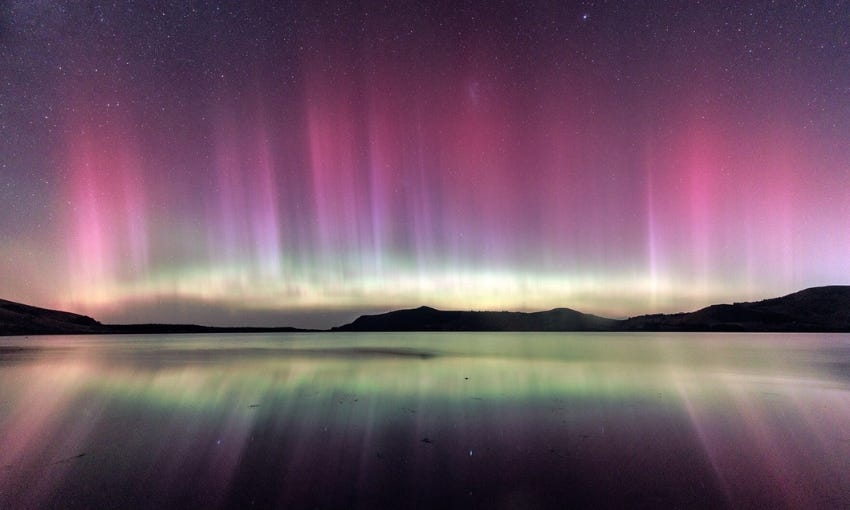Clock ticking on global oceans treaty
After two failed attempts, negotiators are in the final days of hashing out a global agreement to protect the high seas.
Kia ora! Welcome back to Future Proof, brought to you by Electric Kiwi.
Most of the ocean isn’t owned by anyone. It’s a lawless wilderness called the “high seas”, encompassing 46% of the Earth’s surface and nearly two-thirds of our oceans. It’s the domain of seabirds and pelagic fish like tuna, beyond the reach of many rules. But that may soon change if countries finally agree on the terms of a High Seas Treaty (formally called the Biodiversity Beyond National Jurisdictions Treaty). Two attempts to secure agreement failed in 2022. This latest round of negotiations at the UN Headquarters in New York kicked off on 20 February, and is expected to wrap up on Friday 3 March.
What’s at stake?
The ocean plays a massive role in regulating global climate. It’s also home for swathes of biodiversity above and below the water – whales, turtles, albatrosses. But the ocean is under immense pressure from overfishing, climate change and plastic pollution. Only around 1.4% of the high seas have some form of protection. But at the Cop15 biodiversity summit last year, nations agreed to the 30x30 target: protecting 30% of the Earth’s land and oceans by 2030. A global oceans treaty is an essential mechanism for implementing protection in international waters; without it, the 30x30 goal may remain out of reach in our big blue backyard. Bringing home a strong treaty is especially important for Pacific island nations, RNZ reports.
What’s happened so far?
Actor Jane Fonda delivered a Greenpeace petition signed by 5.5 million people, including 70,000 New Zealanders, to the lead negotiator. Forty-five countries have committed to achieving an outcome – but exactly what that outcome looks like remains unclear. At the halfway mark, the High Seas Alliance reported there was a “general optimism” tempered by “frustration that some governments are reopening issues that many thought had been dealt with”.
What will the treaty deliver?
While the details are being hashed out, the overarching aim of the agreement is to create legally binding rules around the conservation and sustainable use of marine biodiversity on the high seas. The agreement covers four main areas. The first is area-based management tools, including marine protected areas – a key tool for achieving 30x30. The second is how to use and share marine genetic resources – that is, useful chemical compounds found in marine organisms. The agreement will also lay out when and how environmental impact assessments must be carried out. Lastly, the agreement will require capacity building and transfer of marine technology – that is, helping smaller countries achieve the first three objectives.
It’s clear this is a challenging negotiation. But I’ve got all my fingers and toes crossed for an outcome that will ensure our shared ocean teems with tuna.
If you’re a solar customer with Electric Kiwi, you’ll now be able to track your daily power exports through their app, and see how much you’re earning with their awesome 12.5c/kWh buyback rate. Use the graph to watch daily, weekly and monthly solar outputs over time, as well as the subsequent percentage savings off your balance. If you don’t have solar, but are thinking about it, Electric Kiwi has partnered with ZEN Energy to give customers $750 off the cost of system installations, including battery and non-battery types. Check out their solar page for all the details.
Climate change enters top 5 issues for New Zealanders
The latest Ipsos poll, conducted during Cyclone Gabrielle, places climate change 4th equal in a ranking of issues considered important by New Zealanders. Toby Manhire examines the poll results and their political ramifications here. Of course, thinking an issue is important and taking action are two different things. In The Side Eye comic this month, Toby Morris says “enough with the lifestyle tweaks and good intentions” and calls for serious, collective action. Speaking of collective action, the Global Climate Strike is back this Friday at a number of centres across Aotearoa. Youth organisers School Strike 4 Climate are asking adults to turn out as part of an intergenerational call for urgent climate action.
Cyclone Gabrielle fallout continues
The explainers are coming thick and fast, with Stuff’s Michael Daly diving into the mud flood to find out where that enormous amount of sediment on the East Coast came from, and what’s going to happen to it. RNZ’s Katy Gosset covers how to talk to kids about the cyclone. The Herald’s Jamie Morton explains managed retreat. Meanwhile, over at New Zealand Geographic, this 2016 story recounting the 1938 Esk Valley Flood began trending this week, highlighting how short our memories are of past disasters. This Hawke’s Bay Today op-ed from a soil conservation consultant just over a year ago is eerily prescient.
Auckland Transport employees reveal disdain for cycling
As someone who’s bicycled for years, this story absolutely incensed me: an Auckland Transport meeting was derailed by anonymous anti-cycling rants by Auckland Transport employees. Hayden Donnell has the details (delivered in a brilliantly scathing fashion). In response, Auckland councillor Richard Hills points out that cycling only gets 1% of Auckland’s transport budget. Yet it’s a transport mode that makes people healthier and happier, saves money, and reduces congestion on roads.
Big thanks to those members who helped us celebrate the premiere of our new documentary, Elements of Truth, in Wellington last week. It was an amazing evening and wouldn't have been possible without your support.
If you’re not a Spinoff member yet, join today to gain access to exclusive events like this along with a world news version of The Bulletin and heaps more. Better yet, every contribution exclusively funds our journalism and helps keep The Spinoff freely available to all. Find out more here.
More stories:
California’s Laguna Beach bans balloons due to ocean pollution concerns
Chris Schulz reports on a day spent pulling rubbish out of Auckland’s harbour with Sea Cleaners for The Spinoff
Could mushrooms one day replace plastic? These researchers think so
Vicky Kyan tells Shepherdess about her love of shinrin-yoku, or Japanese forest bathing
The cicadas are absolutely belting out their summer song at the moment: here are five cool facts about New Zealand’s cicadas
Huntly power station trials burning wood instead of coal to lower carbon footprint, Olivia Wannan reports
How a load of dumped rocks changed the fate of this once fast-eroding coastline in the US
In the first of a 10-part series, Newsroom’s Rod Oram investigates how integrating nature and urban design can benefit people
Aurora australis over Hooper’s Inlet, Otago Peninsula. Image credit: Ian Griffin/Tūhura Otago Museum.
Earlier this week, a solar storm set southern skies alight with the Aurora Australis, also known as the southern lights. The aurora, “the best in years”, sent astrophotographers on all-night missions to capture the spectacular display, which is caused by solar winds interacting with Earth’s magnetosphere. Otago Museum director Ian Griffin took this stunning 10-second exposure just after 1.30am on Monday night near Dunedin.
Shine bright,
Ellen
Got some feedback about Future Proof or topics you’d like covered? Get in touch with me at futureproof@thespinoff.co.nz













